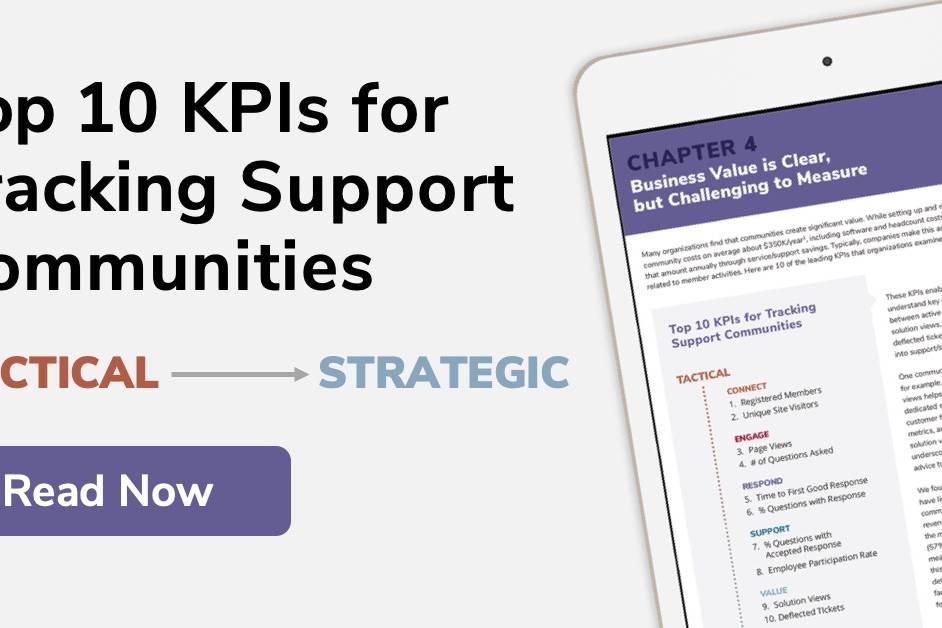There have been plenty of recent blog posts and articles about starting an online community, as a wide range of organizations have begun to realize the value of this social business tool. Some newcomers to the social media scene may not realize well-established online communities have operated for many years — a few in excess of two decades!
While many online communities have evolved and adapted to changing business and member needs over time, sometimes a community has to shut down. The reasons vary: M&A activity, funding cutbacks, disappearance of the product or service the community supported, failure to meet revenue goals due to poor business planning, loss of membership and member engagement. Whatever the reasons, there’s a right way to bring an online community to a graceful conclusion, one that does not trample on your brand or alienate the remaining — but still vocal — membership.
Closing an online community should not be undertaken lightly. It can send a strong — but wrong — message about your business and brand to members. Keep in mind your community’s membership may include your customers, clients, brand influencers and media contacts. Closing an online community can have far-reaching ripple effects on your brand and company reputation. So approach the decision cautiously, keeping member perceptions and the brand uppermost in mind. Here are some tips and advice:
First, recognize that you just can’t turn off the server and make the community “Go away!” Closing an online community requires the same or even better planning than the start-up phase. It may take three months or more to socialize the community shutdown with the membership and to create alternative workflows for managing customer feedback and customer relationships. There are plenty of good ideas and useful information packed inside the community’s discussions, comments, uploads and other contributions from members. Traffic metrics are another valuable resource. All of these insights and fresh ideas will disappear when the lights go out unless you take a second look and carefully review both the structured and unstructured data within the community.
Second, make sure all the key players within the company have been briefed on the business decision to close the community. Then begin telling your inner circle of members about the decision, ideally by phone. Prepare some key talking points to cover on the call — especially the schedule for shutdown — but be ready to have an open dialogue with these core members. Keep in mind they have invested significant time and effort in your community by posting messages, participating in polls and engaging in other membership activities. They will naturally be concerned about what will happen to their contributions and — more important — the personal connections they have made with other members.
Third, consider holding a conference call open to all members if the community is under 5,000 members. Only a small but highly-invested fraction will attend, but this will help get the word out. If the community membership is larger, consider writing an article that describes the decision, thanks the members for their valued contributions and provides alternative channels for their ongoing thoughts and feedback. Give a date in the future (about 30 days) to give members time to process the impact of the closure and exchange contact information within the sub-groups that have formed inside the community. Open a new forum that allows members to voice their concerns and ideas and offers a venue for venting their disappointment.
Fourth, don’t be surprised if a core member leadership team comes forward and offers to run the community on behalf of the organization. This is a natural response from members who are committed to and invested in the community, as well as an example of their resistance to change. Unless this is a viable option, which it rarely is, be clear about the reasons why it is not possible. The primary reason it’s not a good options is because of the brand risks associated with ceding control of the community to persons outside of the organization, who may not be able to keep the community well-moderated and managed.
Fifth, after you shut down the site, be sure to redirect the community URL to a destination that explains the shutdown and links to other destinations within your organization’s Web presence. It may take six months or more for some members to make a return visit to the community after some time away, and they will need to be informed of the change.
Finally, after the dust of the shutdown activity has settled, pull together the internal stakeholders and community team to conduct an honest sunset review of what worked and what didn’t work about the online community. This crucial step should compare expectations at the start to outcomes at the end, which will provide a unique view of your organization’s processes, brands and ability to engage with customers and other stakeholders online. This experience is valuable no matter what the community’s fate, and the organization can learn from this experience and move ahead equipped with valuable lessons learned. After all, there’s every reason to believe you will want to try creating an online community again, sooner or later.
Warning: Attempt to read property "base" on array in /home3/trusten9/public_html/leadernetworks/wp-content/plugins/wp-user-profile-avatar/shortcodes/wp-user-profile-avatar-shortcodes.php on line 665
Warning: Attempt to read property "base" on array in /home3/trusten9/public_html/leadernetworks/wp-content/plugins/wp-user-profile-avatar/shortcodes/wp-user-profile-avatar-shortcodes.php on line 665
Warning: Attempt to read property "base" on array in /home3/trusten9/public_html/leadernetworks/wp-content/plugins/wp-user-profile-avatar/shortcodes/wp-user-profile-avatar-shortcodes.php on line 665
Warning: Attempt to read property "base" on array in /home3/trusten9/public_html/leadernetworks/wp-content/plugins/wp-user-profile-avatar/shortcodes/wp-user-profile-avatar-shortcodes.php on line 665
2 Comments
Add comment Cancel reply
This site uses Akismet to reduce spam. Learn how your comment data is processed.




Thanks for this considered article, Vanessa.
I’ve started up a number of on-line communities, and made sure they got off to a good start, but closing down one is something I’ve never had to do.
If I ever have to, I’ll be using this post as my guide.
interesting insight Vanessa.
Step-by-step what to do, and how to cope with closing on-line community. I like that, because you didn’t forget to ‘take care’ of people.
-Klaudia